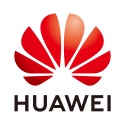
Without a robust 5G network, carriers will not be able to take full advantage of new business opportunities surrounding augmented reality (AR). This was the bottom-line message from Huawei’s recent Better World Summit (BWS), which turned the spotlight on “5G+AR.”
How the network is designed is another key consideration. If AR headsets are to become lighter and cheaper, offloading compute processing to the network edge and cloud — over stable and low-latency 5G connections — is essential. It is why Huawei advocates a partnership approach, spanning AR collaboration in all three areas: 5G networks, devices, and content.
The prize of getting these sorts of partnerships ‘right’ is huge. According to Huawei, working in tandem with a third-party research institute, the AR market will reach a hefty $300 billion with 1.2 billion users by 2025.
Bob Cai, Chief Marketing Officer at Huawei Carrier Business Group, sees the first wave of “massive” AR adoption happening in various industry sectors: education; social networking; shopping; traveling and navigation; and gaming.
And the foundational layer of widespread AR adoption, stressed Cai in his BWS 2021 keynote, is 5G. Deterministic latency, indoor precision location, higher bandwidth (on both the uplink and the downlink) and ability to provide predictable QoS on dedicated network ‘slices’ – not to mention high mobility, since most AR use-cases will involve consumers and enterprise users on the move – make 5G an essential AR building block.
“AR and 5G are combining at the right time,” asserted Cai. “5G switches on AR, and AR lights up 5G."
It’s already happening
South Korea’s mobile network operators are seeing the benefits of converging 5G and AR. David McQueen, executive director at Strategy Analytics, a research firm, gave special mention to LG U+.
By placing heavy emphasis on AR in 5G promotions, McQueen noted at BWS 2021 that LG U+ had managed to increase wireless service revenue by 12% compared with Q1 2019 (the quarter before South Korean operators launched 5G).
“There are a lot of factors behind this success, but AR has been a core part of LG U+ consumer marketing, allowing them to demonstrate the value of 5G and stand out as an innovative provider,” explained McQueen.
Bundling AR devices with flagship 5G smartphones, forging partnerships with local AR content providers, and developing an AR-based navigation app, which, said McQueen, “allows [LG U+] to showcase the enhanced positioning of 5G’s low latency capabilities,” are all reasons why the operator is seeing an ARPU uptick.
He Chengjian, Director of Shenzhen Communication Management Bureau, sees 5G+AR as a new economic “growth agent,” which creates jobs and boosts overall competitiveness. “AR applications today have already become an important driving force for digital transformation”, he told BWS 2021 attendees.
Manufacturing, e-commerce, real estate trading, tourism, healthcare and education are sectors in which Shenzhen is encouraging adoption of 5G-based AR. Other new (and related) growth agents flagged by He are Internet of Things, AI, blockchain, and cloud computing.
The bedrock of digital growth in Shenzhen is a top-notch 5G standalone network, which offers more bandwidth and nippier latency times than the non-standalone variant.
By the end of last year, Shenzhen had deployed 46,500 5G base stations from Huawei. And in what can only be described as a virtuous circle, Cai flagged that Huawei uses AR to quicken rollout of 5G base stations, so greatly boosting delivery efficiency.
4G good, 5G better
In advance of the first wave of massive AR adoption anticipated by Cai, one powerful example of 5G showing off its muscle today is in healthcare. By using a combination of VR (virtual reality) and AR, one promising application is to help ambulance paramedic crews carry out diagnostic techniques under guidance from a remote clinician.
Vodafone Italy offers a 5G-connected ambulance service, using Microsoft’s HoloLens AR headset, to guide paramedics through procedures. The functionality of “you see what I see” is not possible without low latency 5G connections.
BT is trialling a similar 5G-based service, using AR/VR to help ambulance paramedics to carry out ultrasound — one of the most common forms of diagnostic techniques — with the aid of ‘haptic glove’ used by the remote clinician.
BT reports that it is possible to use 4G, but the service would not work as well. Video will drop from high definition to standard definition, for example. Moreover, with 5G (as opposed to 4G) BT found it was able to run simultaneous data sessions, where high-definition video cameras are running at the same time as voice, ultrasound, and the haptic glove.
Pandemic-induced access restrictions to work environments has also increased demand for AR-based remote collaboration when it comes to machine maintenance. Yet if service technicians are to communicate effectively and synchronously with ‘remote’ experts to solve problems, a stable and low-latency Internet connection is essential. 5G can provide this.
The next-gen tech’s much higher bandwidth, in comparison with 4G, can also ensure that huge datasets – typically measured in gigabytes within the construction sector – are transferred almost instantly to the service technician’s device.
Reliable remote streaming of data, after “performance-heavy” calculations have been outsourced to the cloud – 3D image rendering, for example – is another 5G ‘remote collaboration’ use-case that holds out much promise.
If there is no need compute everything on the device, helped by multi-access edge computing, the prospect of consumers being able to fix their own domestic household appliances, say — helped by AR apps accessible on their regular smartphones — does not seem wildly futuristic.
AR holds out much promise for carriers and consumers, but 5G, along with ecosystem collaboration, is needed to realise its full potential.
This content is sponsored by Huawei.
Huawei Technologies Co. Ltd
About the Author(s)
You May Also Like




.jpg?width=300&auto=webp&quality=80&disable=upscale)







